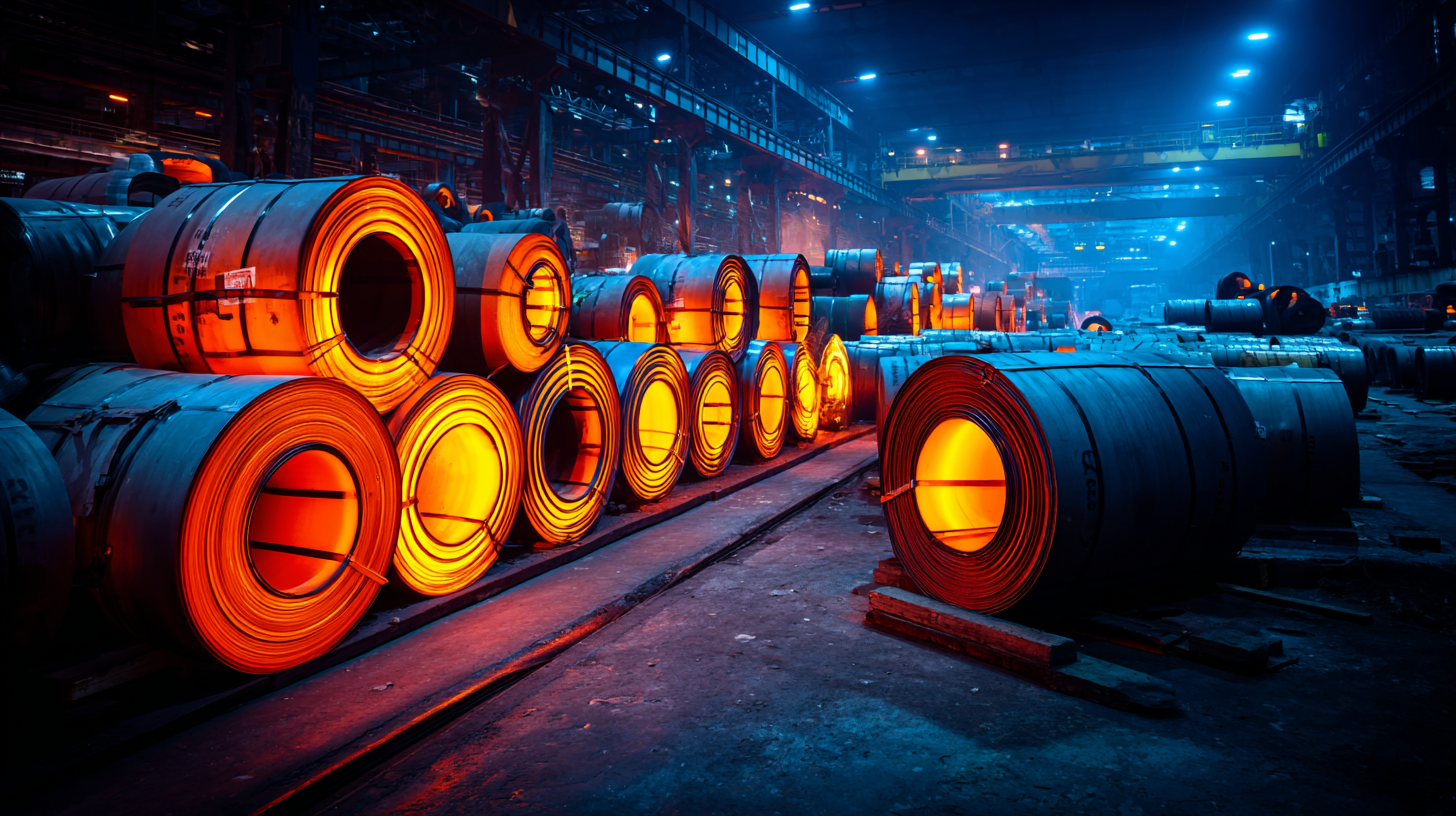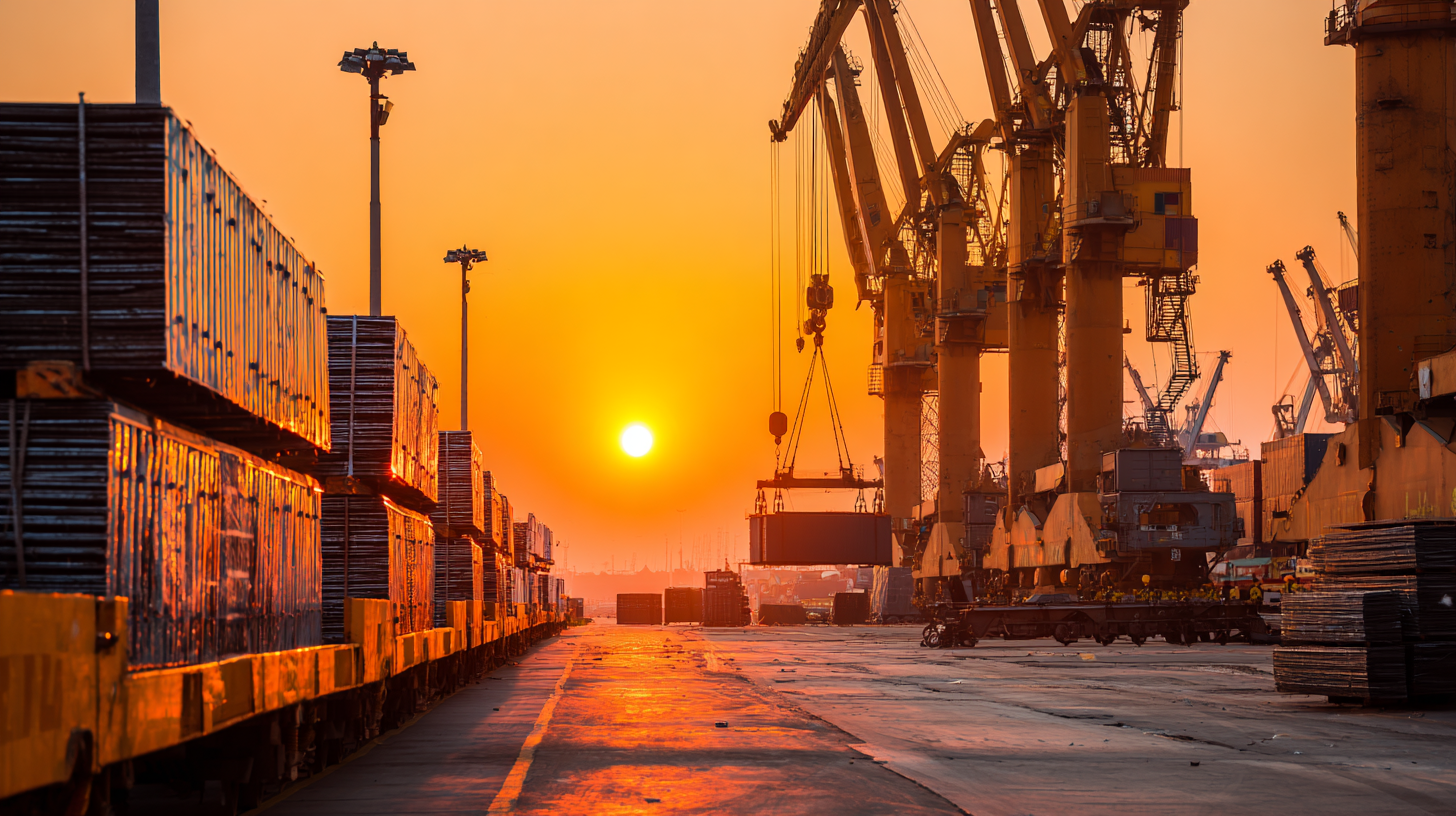
In an era marked by rapid globalization and technological advancement, the role of Steel Of Iron in optimizing supply chains has become increasingly vital. According to the World Steel Association, global crude steel production reached approximately 1.9 billion tonnes in 2022, with the demand for raw materials continuing to rise in the face of supply chain challenges. Innovations in the applications of Steel Of Iron not only enhance the efficiency and sustainability of logistics but also contribute to significant cost reductions across various industries. As companies strive for resilience in their supply chains, understanding the comparative advantages of different steel grades and their innovative applications is essential for maintaining a competitive edge. This blog aims to explore the transformative potential of Steel Of Iron, providing insights into its best practices and future trends in the global marketplace.

The role of steel and iron in modern supply chains cannot be overstated, as these materials are foundational to various industries, ranging from construction to automotive. According to a report by the World Steel Association, global steel production reached 1.9 billion metric tons in 2021, underscoring its critical importance. This significant volume showcases how steel serves as a backbone for infrastructure projects worldwide while also catering to the demands of rapidly growing sectors such as renewable energy and electric vehicles, which rely on advanced steel grades.
Innovative applications of steel and iron are reshaping supply chain dynamics, particularly through the adoption of smart manufacturing practices. A McKinsey report highlights that the integration of digital technologies can enhance production efficiency by up to 20%, allowing companies to respond more rapidly to market changes. In addition, advanced materials science is leading to the development of lighter yet stronger steel, which optimizes transportation efficiency and reduces carbon footprints. Such innovations not only bolster resilience against supply chain disruptions but also contribute to sustainability goals set by industries worldwide, reflecting a growing alignment between material innovation and responsible sourcing strategies.

The steel industry is experiencing a transformative wave of innovative technologies aimed at enhancing production efficiency and reducing environmental impact. Recent reports by the International Energy Agency highlight the crucial role of the Iron and Steel Technology Roadmap, showcasing how advancements such as carbon capture and digital innovations are paving the way toward sustainable steelmaking. As global demand for stainless steel coils, particularly from leading manufacturers, soars, these technologies are integral for meeting market needs while striving for sustainability.
Emerging trends indicate a significant shift toward digitalization within the steel sector. Research shows that small and medium enterprises (SMEs) are increasingly adopting digital solutions to improve resource efficiency, demonstrating a broader commitment to sustainability aligned with the industry's push toward achieving net-zero emissions by 2050. Collaborative partnerships, such as those between industry leaders, are instrumental in driving these innovations forward, particularly in regions where manufacturing capabilities are rapidly evolving. The combination of these technological advancements and strategic alliances signifies a vital step toward a more resilient and eco-friendly global supply chain in steel production.
This chart illustrates the efficiency improvements in steel production by various innovative technologies over the years, showcasing how these advancements contribute to the global supply chains.
The steel industry plays a crucial role in global supply chains, and the shift towards sustainable practices in steel manufacturing is more vital than ever. Innovative applications of steel, particularly in eco-friendly initiatives, are beginning to reshape the landscape. By adopting greener methods, such as using renewable energy sources and recycling scrap metal, manufacturers can significantly reduce their carbon footprints while maintaining product quality. These advancements not only minimize environmental impact but also increase efficiency, yielding cost savings that can be pivotal for companies looking to enhance their competitive edge.

Furthermore, sustainable practices extend beyond production to encompass logistics and distribution. Implementing technologies like automated inventory management and real-time tracking systems allows companies to optimize transportation routes and reduce waste. Emphasizing eco-conscious material sourcing and processing contributes to a more resilient supply chain, catering to the growing demand for sustainability from consumers and regulatory bodies alike. As industries continue to innovate, the integration of sustainability in steel manufacturing will pave the way for a more responsible future, ensuring that global distribution networks thrive without compromising the planet’s health.
The steel supply chain is integral to various industries, demonstrating innovative strategies that optimize performance and reduce costs. According to a report by the World Steel Association, global steel production reached 1.9 billion metric tons in 2020, emphasizing the industry's significance in meeting increasing demand while maintaining sustainability. Companies are now leveraging advanced data analytics to enhance visibility across their supply chains. For instance, thyssenkrupp Steel utilizes big data to predict demand fluctuations, thereby aligning their production schedules and inventory management more effectively.
Case studies reveal that successful supply chain management strategies often incorporate just-in-time (JIT) production methods, which minimize waste and improve efficiency. A notable example is ArcelorMittal, which implemented a JIT strategy that reduced lead times by 30%, allowing them to respond more rapidly to market changes. Furthermore, utilizing blockchain technology to track material provenance has become increasingly popular; it not only ensures transparency but also enhances traceability in compliance with regulatory standards, as showcased by companies like Nippon Steel. As the steel industry evolves, these innovative approaches are essential for maintaining a competitive edge in global markets.
The future of global supply chains is rapidly evolving, particularly with the innovative applications of steel and iron. As industries push for more sustainable production methods, the steel sector is embracing new technologies that not only enhance efficiency but also reduce environmental impact. Advancements like electric arc furnaces and the integration of recycled materials are paving the way for greener production processes. These innovations not only cater to rising global demand but also align with various countries' goals towards carbon neutrality.
**Tip:** Companies should assess their supply chains regularly to identify opportunities for integrating innovative steel products that enhance sustainability while maintaining robustness.
Moreover, smart manufacturing is on the rise, utilizing IoT and AI to optimize supply chain operations. This digital transformation allows for real-time monitoring and predictive maintenance, significantly reducing downtime and waste in steel production and distribution. As global trade expands, adaptability and quick response to market changes will define successful supply chains.
**Tip:** Embrace digital tools and analytics to enhance visibility in your supply chain, making data-driven decisions that can improve operational efficiencies and customer satisfaction.